Advertisement
Advertisement
Go down the list of top-selling 4×4 dual cab utes and there’s one that stands out. No prizes for guessing we’re talking about the Mitsubishi Triton here. Noticeably the absence of a high-priced flagship model from its line-up.
Ford comes up with ever-more variants at the top end of the Ranger range. Toyota has the Rogue and soon the GR Sport. The top-spec Isuzu D-Max is more than $70,000 on the road. And the locally-fettled Warrior flies the flag for the Nissan Navara. The Triton range tops out at $56,940 with the GSR plus ORCs.
Given the propensity of lots of Aussie ute lovers to spend lots of money on flash 4×4 dual cabs, it’s an opportunity going begging.
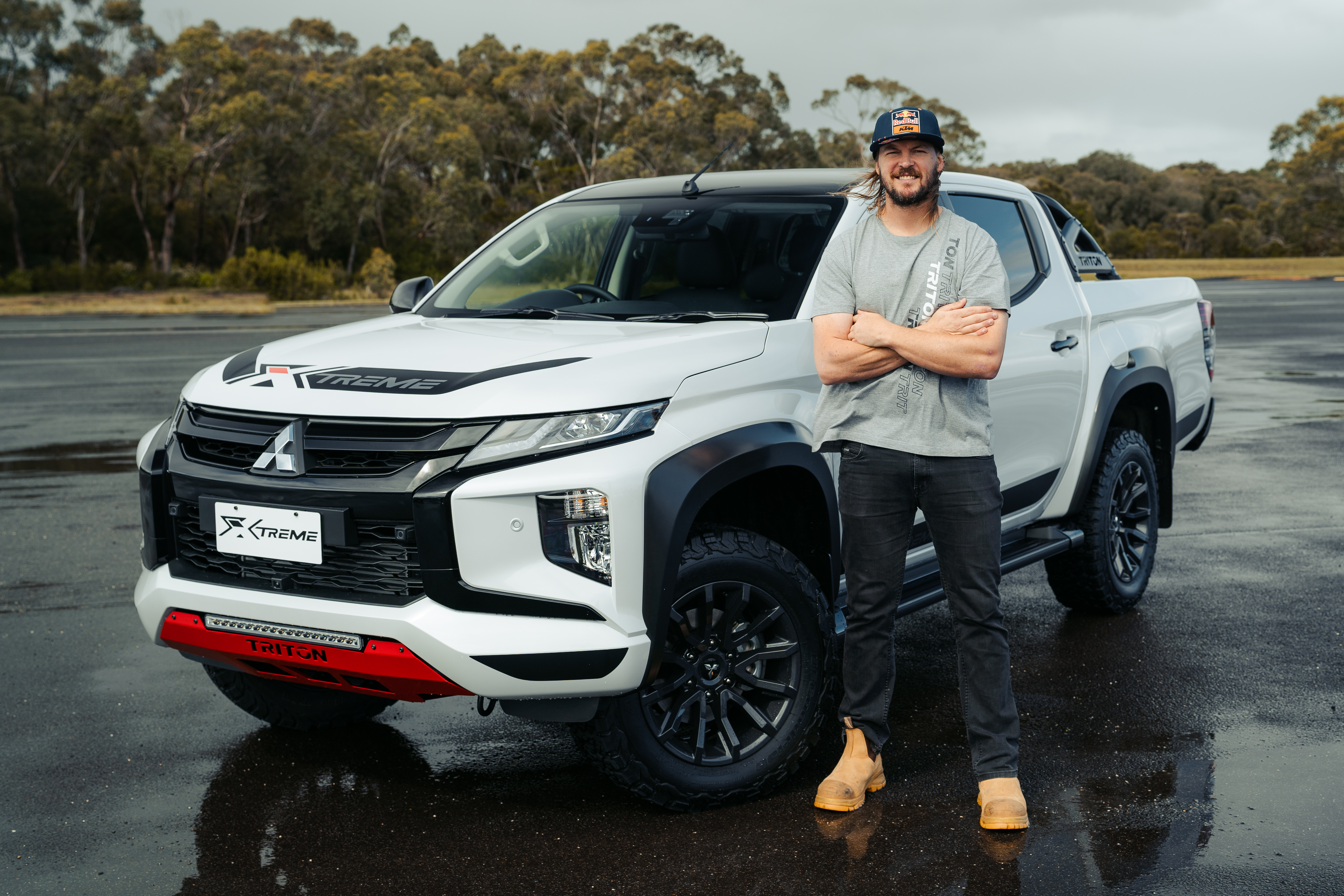
Well, no more, because the clever crew at Walkinshaw Automotive Group have spotted that opportunity and come up with the Mitsubishi Triton Xtreme as a solution.
It’s a Mitsubishi Triton based on the GSR that comes with a basket of cosmetic and technical changes designed to make it look more assertive and drive better off- and on-road.
It’s $71,990 (plus on-road) price certainly fills that hole at the top of the Triton range.
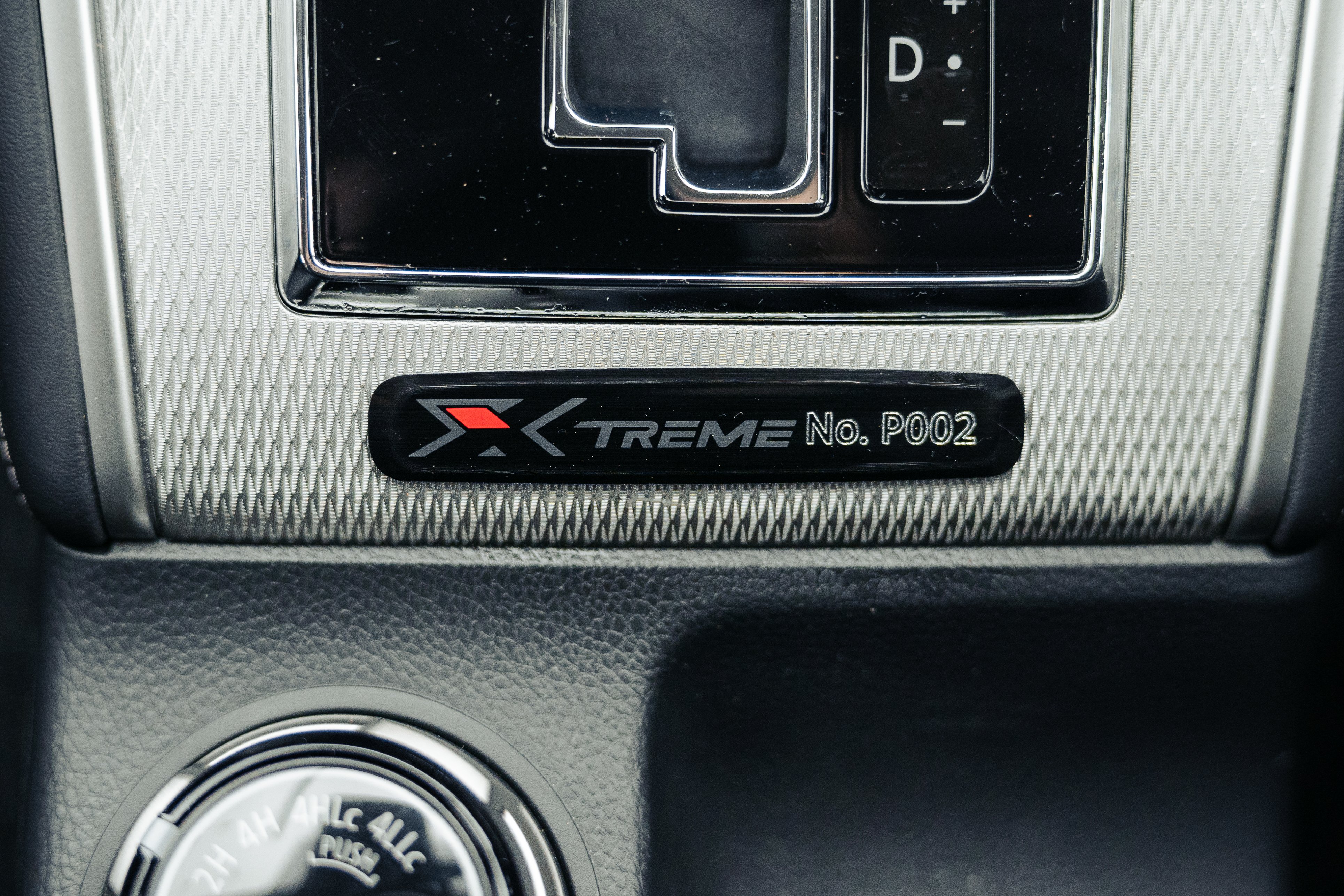
In the days when Australia had an automobile manufacturing industry Walkinshaw Automotive Group was better known as Holden Special Vehicles (HSV) and for tuning outrageous V8 Holden Commodores
But since local manufacturing ended it has turned its attention to utes. It was responsible for the Holden Colorado-based HSV SportsCat, has ongoing responsibility for the Volkswagen Amarok W Series and has even dabbled in a bit of suspension tuning on the T60 for LDV.
Of course, it’s also the mob responsible for converting the RAM and Chevrolet Silverado full-size Yankee pick-ups into right-hand drive at its Melbourne facilities. It will also soon have the same role on behalf of Toyota converting the Tundra.
All the above projects have one thing in common – some sort of official backing/approval from the brand involved.
But not in the case of the Xtreme.
In the works for the last 18 months, this is a WAG project from the funding to the development to the modifications made on an assembly line in Melbourne.
Look, we suspect Mitsubishi Motors Australia might have had some interest in the early days of the project, but that’s certainly not the case now. It’s more interested in launching the new-generation Triton due in 2024.
So the way it works is Walkinshaw buys Triton GSRs from Mitsubishi, makes its cosmetic and mechanical changes and then sells them on to Mitsubishi dealers, who are expected to start retailing them from the third quarter of 2023.
The anticipated production run is about 500 and WAG says it’s already got orders from dealers for more than 400.
Warranty-wise, WAG covers the modifications and MMAL continues to cover the stock bits.
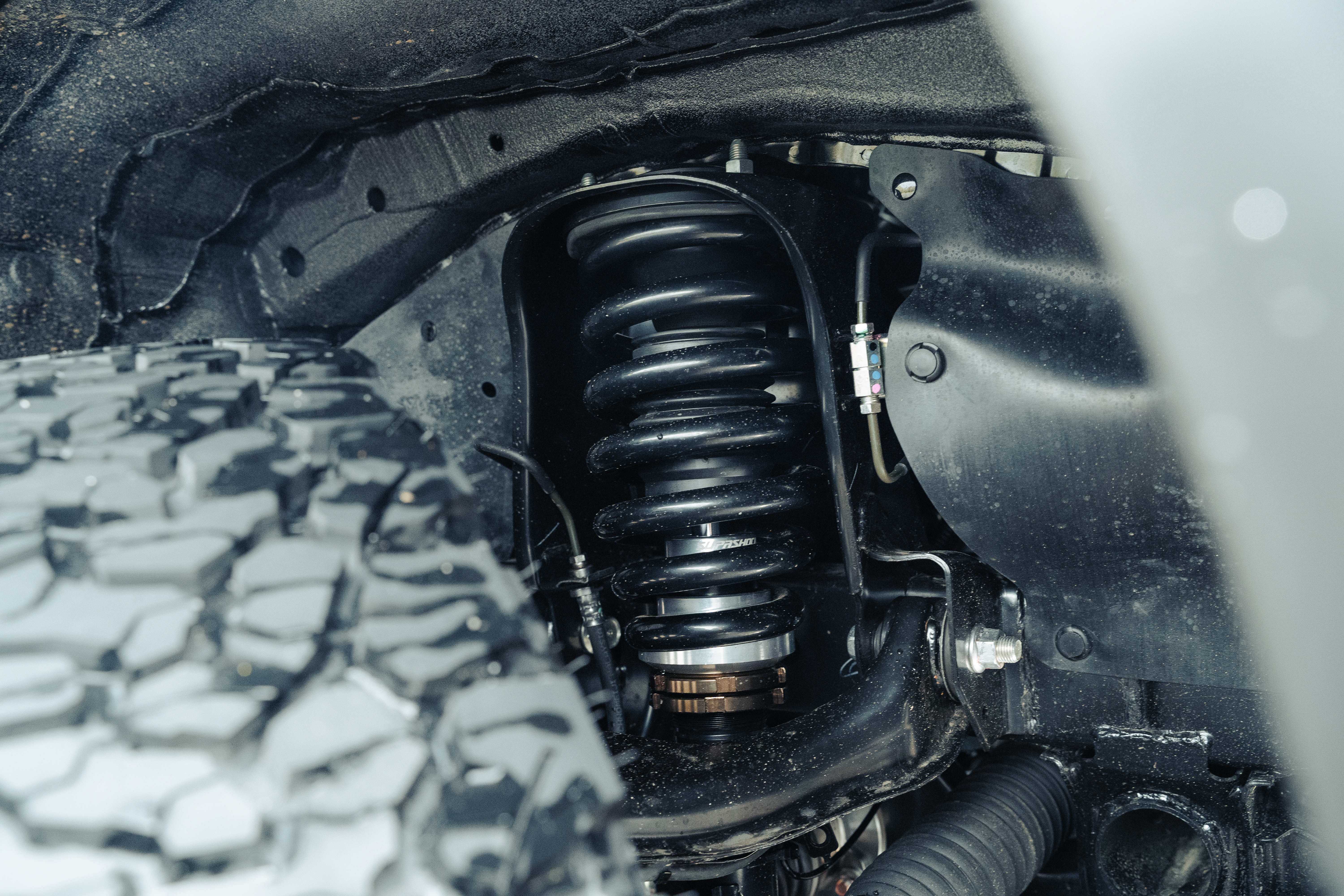
WAG’s performance goal with the Xtreme was to make it a better on-road and off-road drive.
At the heart of those ambitions are a set of dampers from those Adelaide suspension gurus Supashock.
You may have heard of Supashock as the supplier of the official damper unit to the V8 Supercars touring car championship.
But Supashock also has a long relationship with Walkinshaw, developing dampers for both its race and road cars, including the SportsCat.
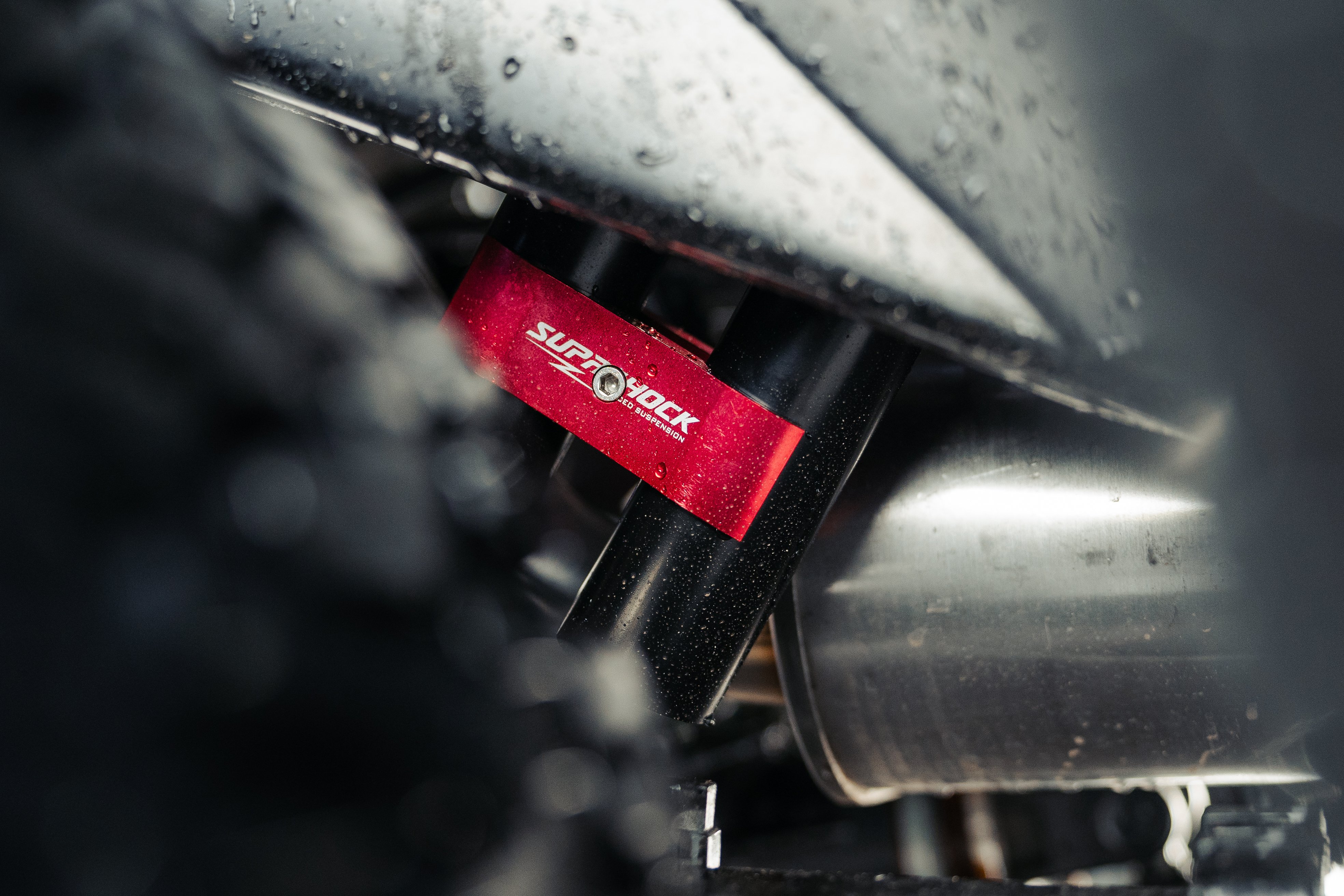
In this case, the Xtreme employs Supashock 46mm monotube dampers with a 20mm rod design. The front units have a remote canister while the rears run a piggyback system.
The dampers are complemented by a slightly stiffer front spring, but the leaf springs at the rear are stock.
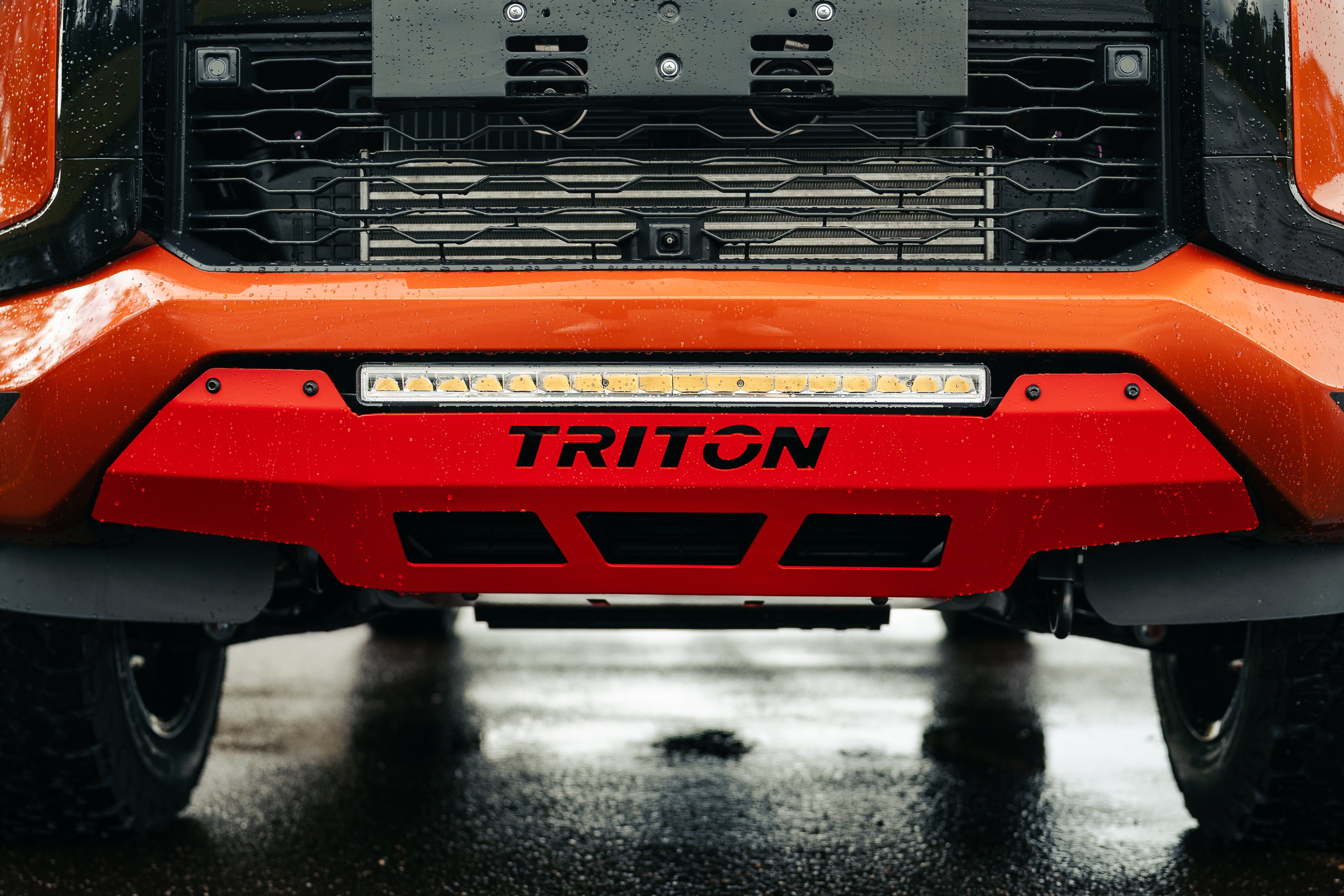
Completing the dynamic upgrades are a set of 18 x 8.5-inch forged aluminium wheels with BF Goodrich KO2 all-terrain tyres.
“The biggest change to this car is the body control,” said WAG chassis engineering chief David Slater, who oversaw a test program that included a Flinders Ranges trip towing a caravan.
“The standard car is very stiff at the back because of the load carrying capacity of it, so generally we look at the car and think ‘yeah you might carry a load in the back of it but you are not going to do that all the time’.
“Most of the time you are going to drive it in that condition [without a load] or with the family in the back and maybe with a bit of load and we set the car up that way.”
Slater says a key objective of the tuning program was to reduce head shake. That’s not a technical term but literally the amount your head wobbles around when travelling in the Xtreme on bumpy roads.
The Xtreme’s handsome new wheels were designed in-house by WAG chief designer Julian Quincey and his team.
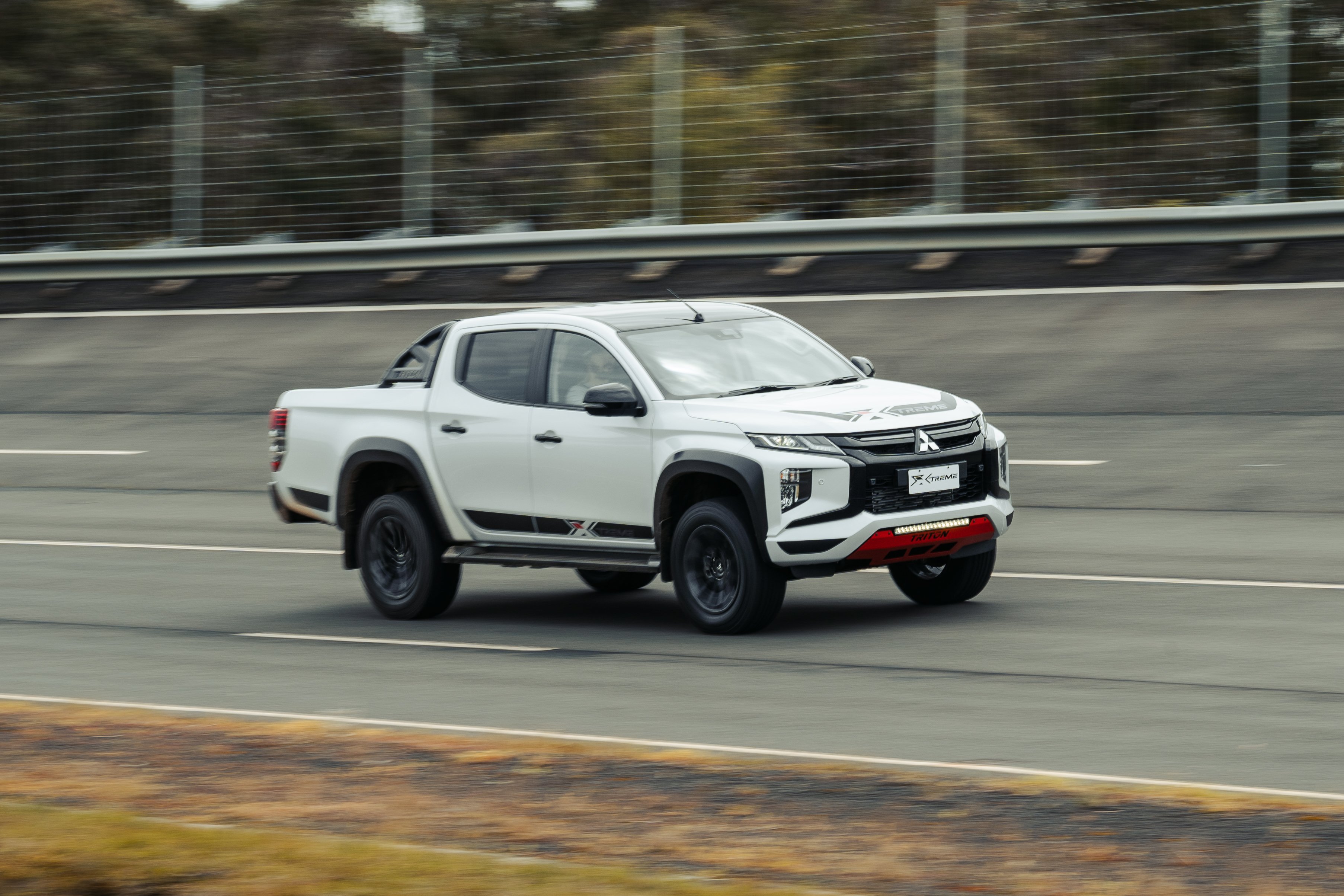
Other updates include a new custom-designed bash plate with an integrated light bar that’s been wind tunnel tested to ensure cooling paths aren’t affected, a sports bar with the Triton logo, fender flares and a decal kit including a bonnet graphic and full-length side stripes.
The Xtreme certainly looks more aggressive than the standard Triton, but it’s not so mean to be off-putting.
“It’s something that looks strong, purposeful and aggressive,” says Quincey.
In particular, he is proud of the forged alloy wheel design: “We own the blank and we’ve maximised the section we can get within that blank so it’s got a really strongly angled-in spoke.
“We’ve also got an inset light catcher at the back of the spoke. It has a depth that’s unusual in an off-road wheel.”
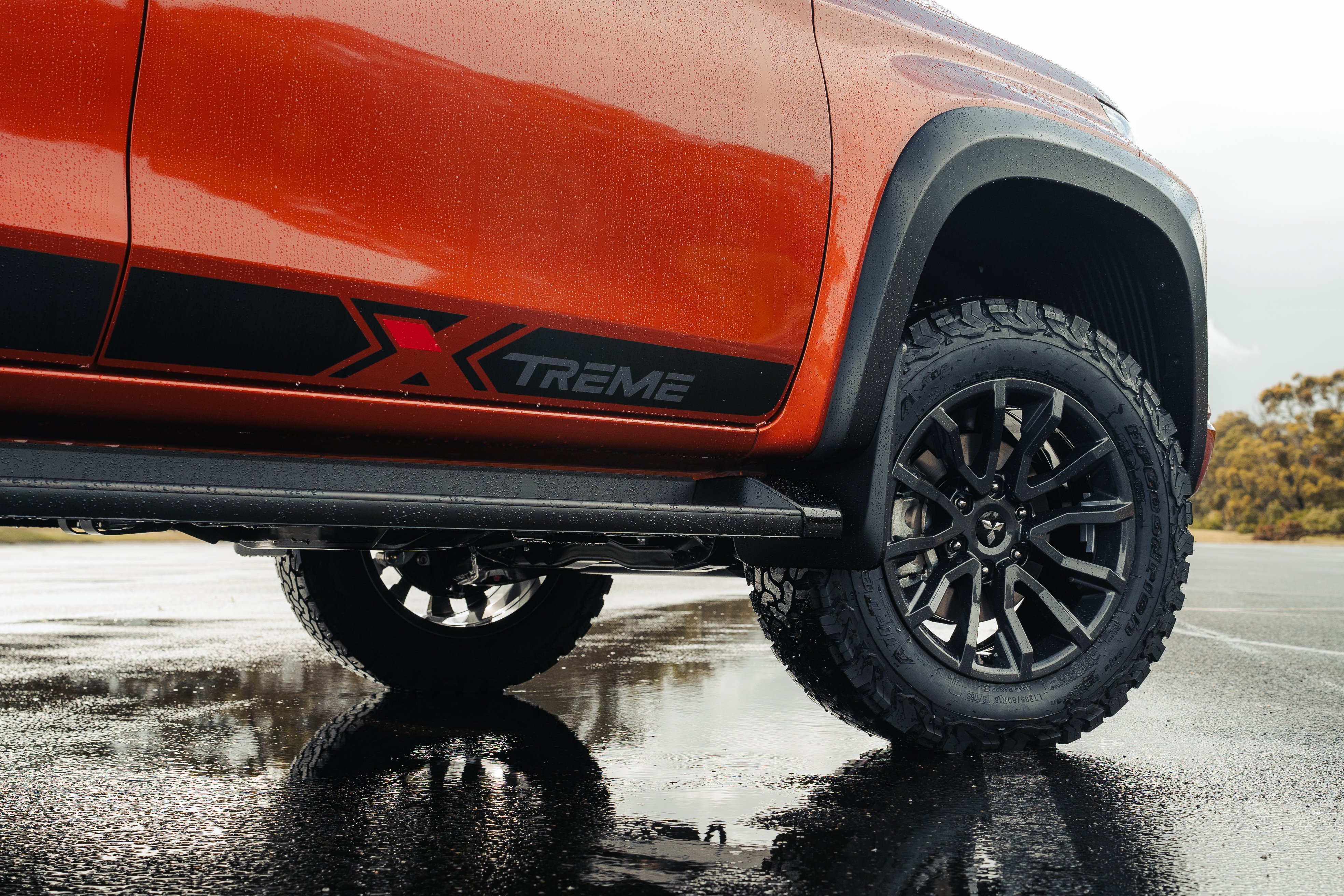
The drivetrain is completely stock with no changes to the 133kW/430Nm 2.4-litre turbo- diesel four-cylinder engine, six-speed automatic transmission, Super Select II 4×4 system with low range and locking rear diff.
Drivetrain performance upgrades were off the table because of budget and timeline restraints. Upgrades to the disc/drum braking set-up were ruled out for the same reason and because previous experience indicated not many people would want them.
The suspension modifications have made no changes to ground clearance or travel, which is a pity because the Triton could use more rear wheel articulation off-road. A lift kit was ruled out for the same reason as engine and brake mods – time and money. No key exterior or interior measurements were changed.
Standard capacities are also retained, so the Xtreme can carry up to 900kg, tow up to 3100kg, has a 2900kg GVM and a 5885kg GCM.
In terms of equipment it’s all GSR stuff from the seven airbags to the infotainment system with Apple and Android smartphone connectivity to the leather appointed seats.
In fact the only thing that changes inside the Xtreme compared to the standard GSR is the addition of a build plate.
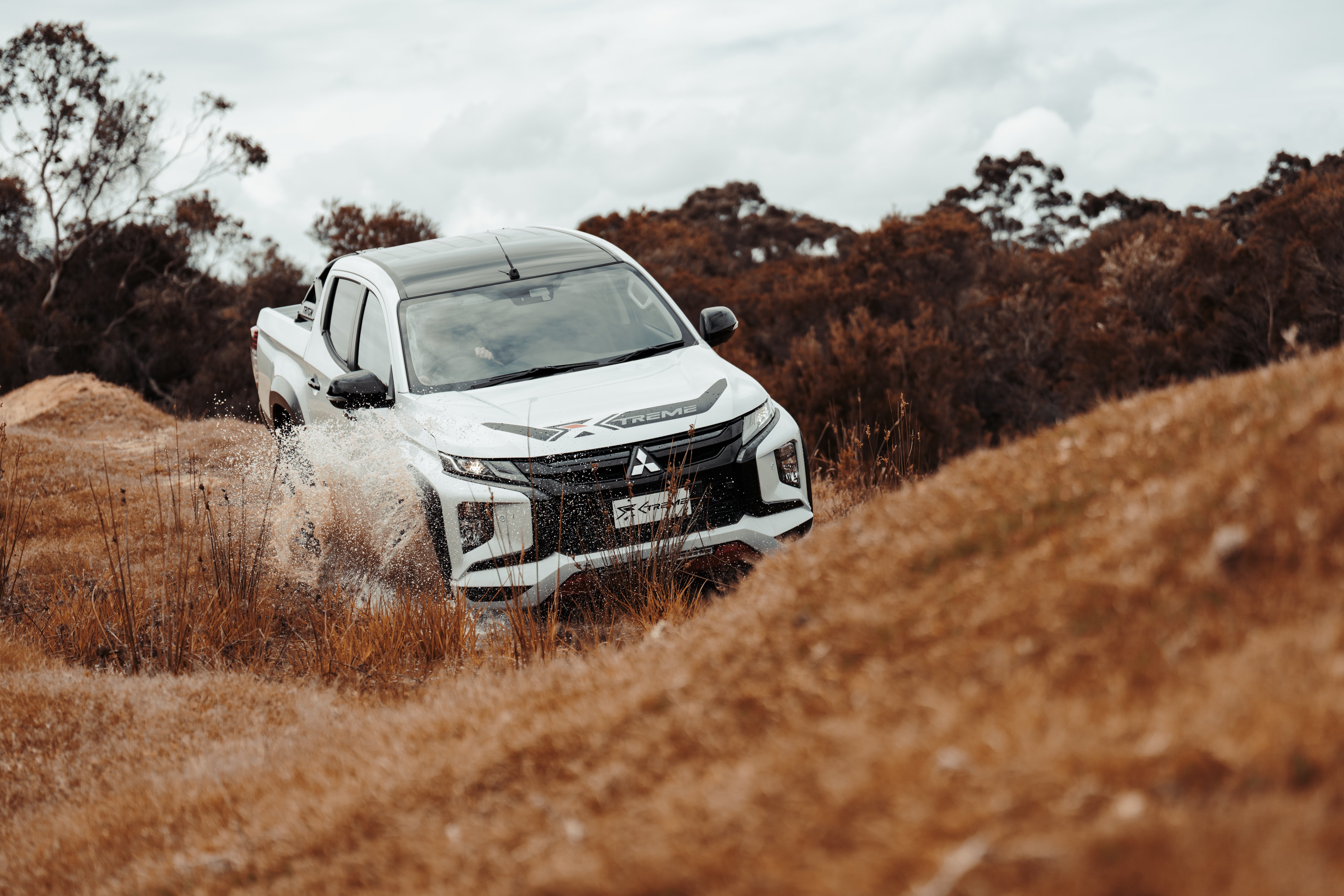
You are not going to be surprised to learn the Xtreme drives a lot like a Triton GSR. The improvements are tangible but not necessarily huge.
Obviously, it’s all about the ride, the handling and the steering. We got the chance to assess them at the VinFast – formerly Holden – proving ground at Lang Lang on the bitumen ride and handling course and on a moderately technical off-road loop the Xtreme could complete in high range.
A chance to drive a stock Triton on the bitumen helped provide some clarity, although we didn’t sample it off-road as well.
The Xtreme’s clearest advantage is in the way it retains better control of the body over bumps. The tuning of the Supashocks means high-speed swales and low speed jiggles are both rounded off better.
The standard Triton tends to pop off imperfections with less body control.
And that means the Xtreme does achieve Slater’s objective of reduced head shake.
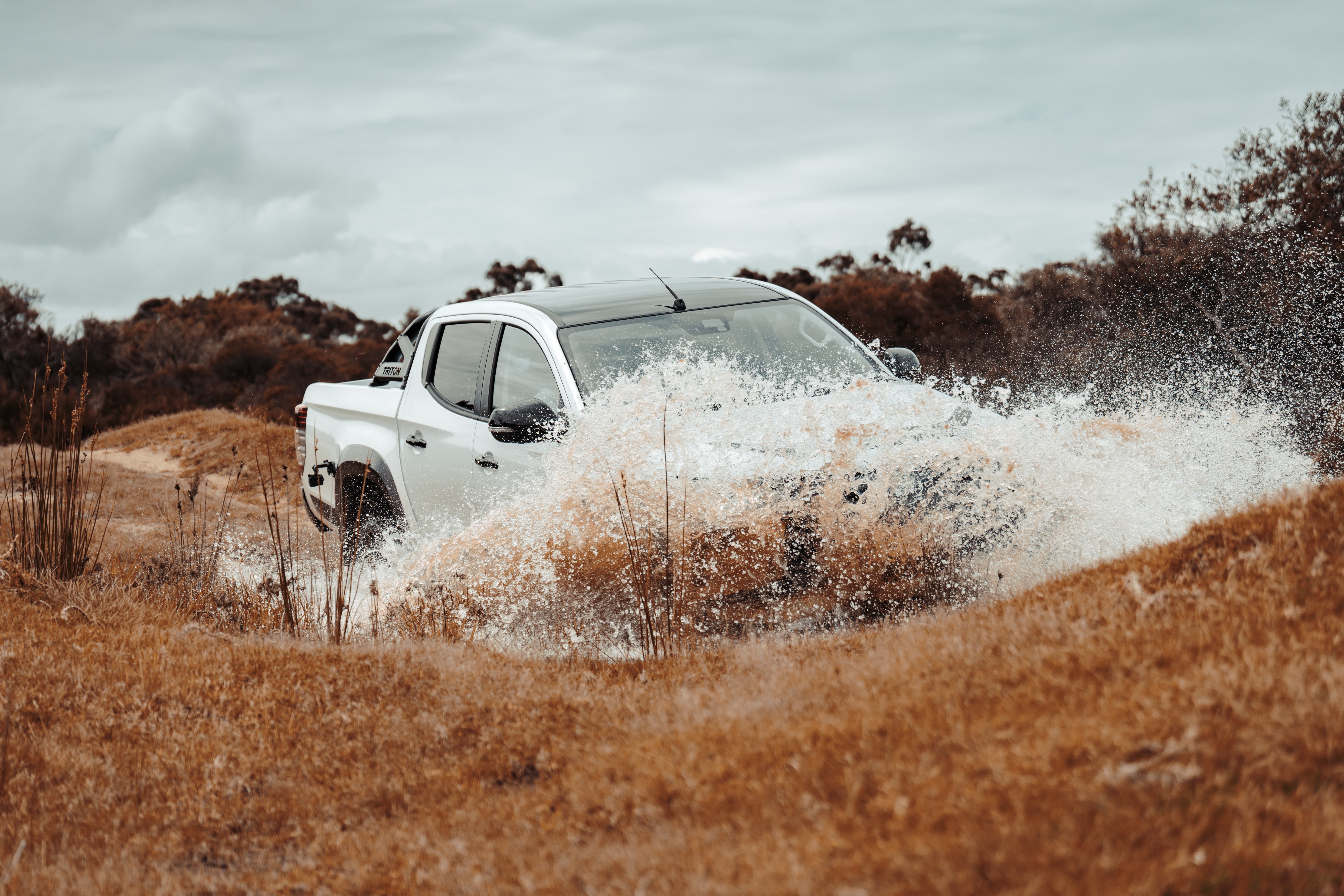
Another advantage the Supashock provide is a purer steering feel. On a rutted bitumen corner the Xtreme gave feedback rather than kickback.
Of course, the KO2s also played a role in all this. They comfortably cleared the off-road obstacles – some moguls, a muddy section, a short, steep climb and descent – but they also proved their worth on-road with decent grip and low levels of roar.
All this was backed up by known Triton drivetrain traits, comprising a coarse but enthusiastic engine, a decent transmission and an effective 4×4 system.
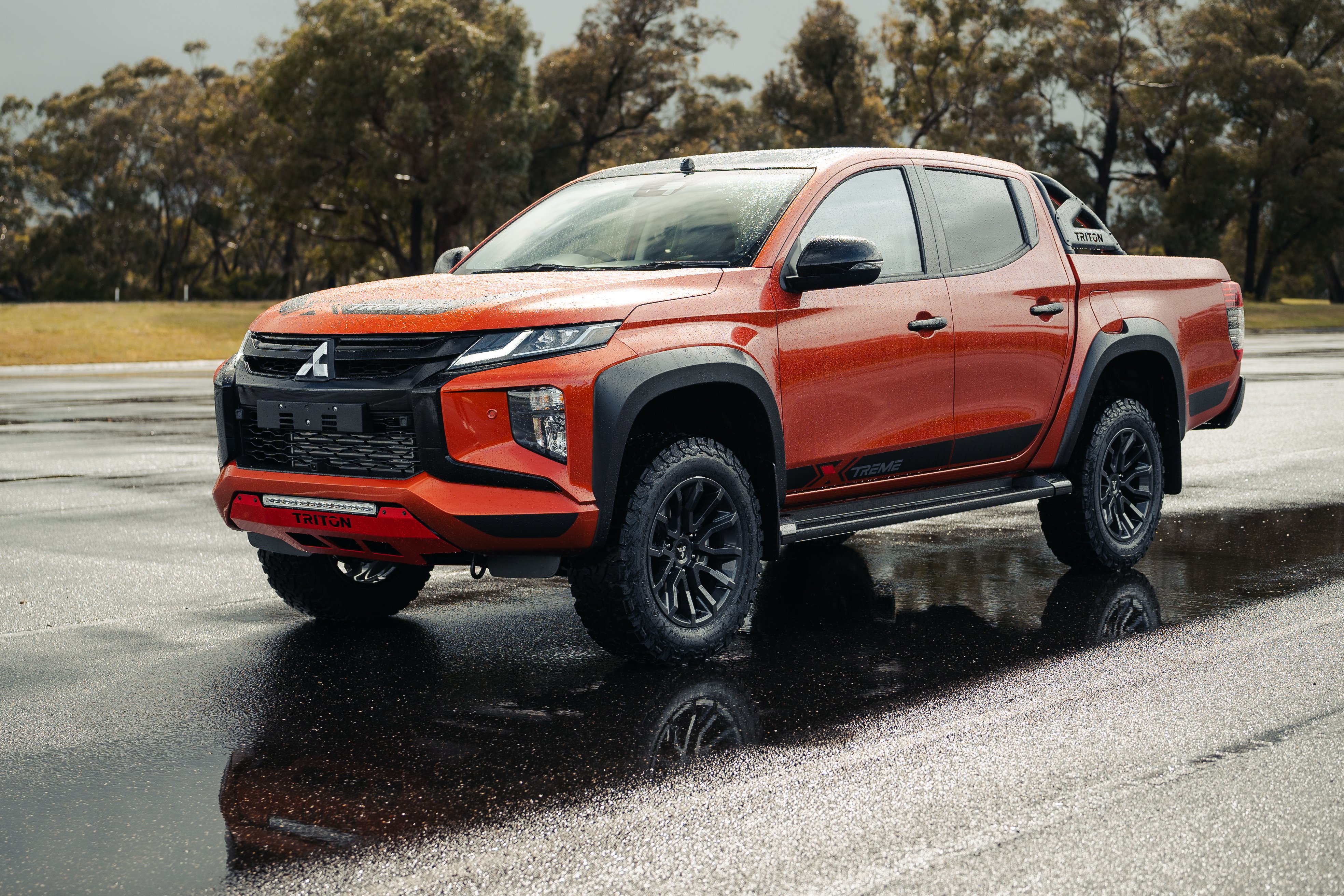
The Mitsubishi Triton Xtreme is $15,000 more than the Triton GSR, which is a lot of extra money to charge for an incremental improvement in driving behaviour.
It’s also a lot of money to ask when you consider the Navara Pro-4X Warrior fettled locally by WAG rival Premcar offers more modifications for less cash.
And don’t forget there’s a new-generation Triton coming in 2024 that will render the Mitsubishi Triton Xtreme instantly old news.
Essentially it boils down to how much you’ve been hankering after a higher capability Triton.
If you love the Triton then this version is definitely the most capable model we’ve seen yet available through a dealer, especially for going off-road.
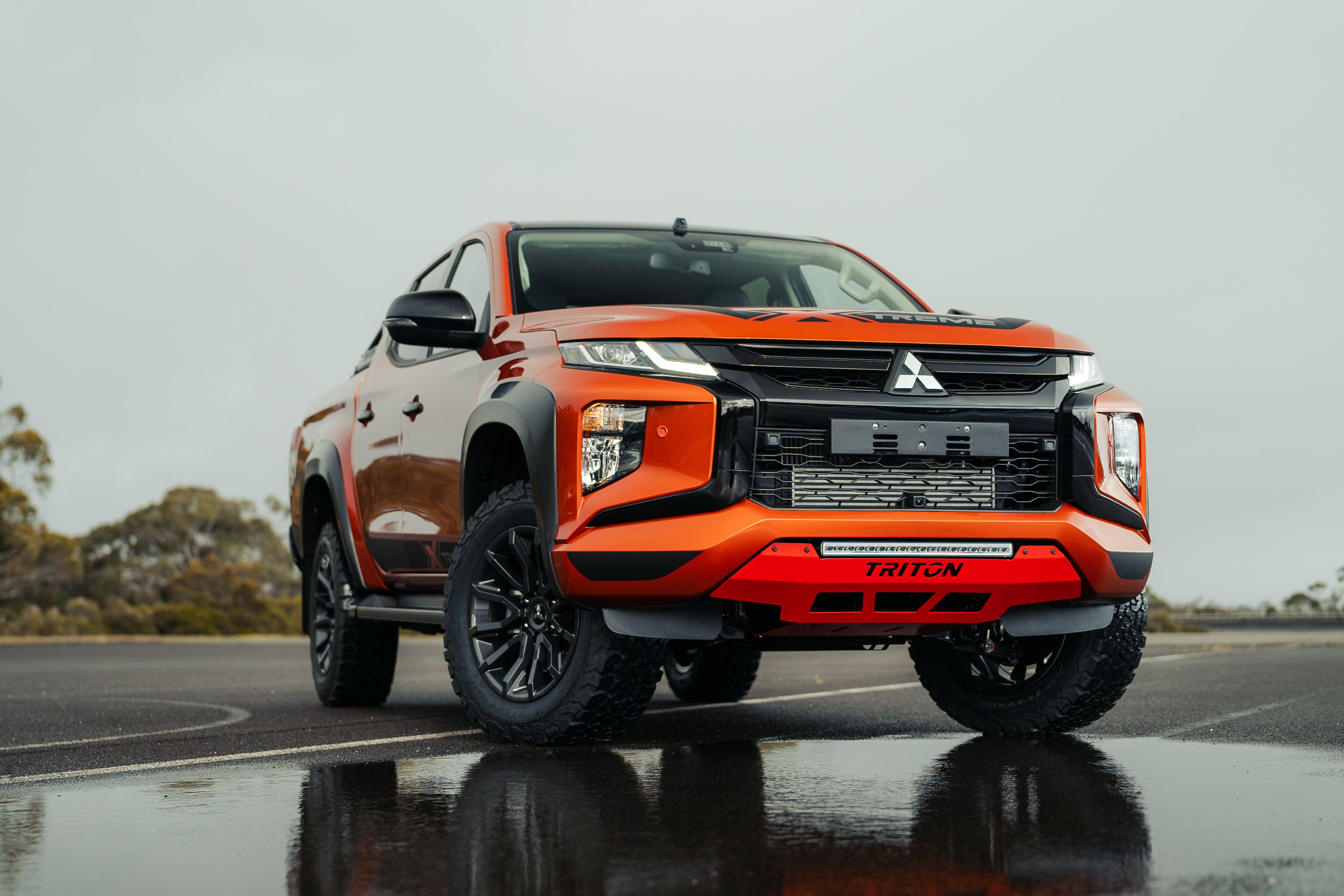
On sale: Q3 2023
Price: From $71,990
Body: 4-door dual cab ute
Length/width/height/wheelbase: 5305mm/1815mm/1795mm/3000mm
Kerb weight: 2000kg
Gross vehicle mass (GVM): 2900kg
Gross combination mass (GCM): 5885kg
Payload: 900kg
Tow capacity: 3100kg
Engine: 2.4-litre four-cylinder turbo-diesel; 133kW/430Nm
Fuel tank capacity: 75 litres
Transmission: 6-speed auto
4WD system: dual-range part-time 4×4
Tyres: BF Goodrich AT KO2 LT
Tyre size: 265/60 R18
Ground clearance: 220mm
Approach angle: 31.0 degrees
Ramp-over angle: 26.0 degrees
Departure angle: 23.0 degrees
Wading depth: 500mm